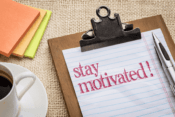
Digital Stress Management Techniques
It was all about small, innocent morning habits. Wake up, check your phone, scroll through emails, notifications, and social media updates before even getting out of bed. What was supposed to be a five-minute check turned into twenty minutes of tension.
During one such morning, I was doom-scrolling through negative news and work emails that remained unanswered, when I realized that there was a strange tightness in my chest. It was not only physical. I was mentally drained even before the day had started.
That was my call to action.
The digital world, which was meant to keep me connected, was stealthily turning into my main stressor.
Fun Fact: Did you know the average person receives 96 notifications per day?
That’s roughly one notification every 10 minutes, constantly pulling your attention. According to Pew Research (2025), 68% of adults report feeling overwhelmed by the digital noise in their daily lives.
It is a known fact that digital stress has become a new form of modern burnout. But here is the good news. You can manage it. You do not need to go off the grid or delete all your apps. Small, mindful shifts in your habits can create massive relief.
Why Digital Stress Sneaks Up on Us
Unlike obvious work stress where deadlines loom or meetings pile up, digital stress feels more like a slow drip. You are not always aware of it. It builds up through constant pings, information overload, endless screen time, and the pressure to always be available.
Expert insight: Dr. Lisa Monroe, a digital wellness researcher, explains,
“Our brains are not designed to process continuous streams of information without breaks. Digital stress emerges when we do not give ourselves mental pauses from the input.”
Proven Techniques to Manage Digital Stress
We want to go over some simple and practical ways for you to alleviate digital stress and get back your peace of mind.
- Create a Digital “On/Off” Ritual
An average adult starts and ends the day with screens.
Change the narrative. Begin your day with a five-minute screen-free activity like stretching, journaling, or simply sitting quietly. In the evening, set a “last screen touchpoint” at least 30 minutes before bed to allow your mind to unwind.
- Batch Process Your Notifications
Instead of reacting to every ping, batch-check notifications at set intervals during the day.
For example, check emails at 10 AM, 1 PM, and 4 PM only. Turn off all non-essential app notifications. This gives you blocks of uninterrupted focus and reduces the mental clutter.
- Use the “Rule of Three” for Social Media
When you realize yourself mindlessly scrolling, pause and ask:
- What am I looking for right now?
- Is this helping me feel better?
- Can I spend this time doing something more refreshing?
This simple self-check interrupts automatic scrolling loops and brings awareness back to your actions.
- Schedule Screen-Free Micro-Breaks
Every 60 to 90 minutes, step away from all screens. Go outside, do a few stretches, or close your eyes for a few deep breaths. These micro-breaks act as mental resets that prevent digital fatigue from compounding.
- Declutter Your Digital Space
A disorganized digital workspace is as stressful as a cluttered physical desk.
Take ten minutes weekly to clean up your desktop, organize folders, delete unused apps, and unsubscribe from unnecessary email lists. A clean digital space reduces decision fatigue and boosts focus.
Expert insight: “Managing digital stress is not just about controlling devices, but about anchoring your mind back to the physical world regularly,” says Dr. Monroe.
She recommends activities like mindful walking, using tactile objects like stress balls, or even doodling as simple ways to reset after heavy screen time.
Reality Check: You Do not Have to Be Available at All Times
One of the biggest sources of digital stress is the belief that we need to respond instantly. But here is a truth bomb: you are allowed to be unavailable. You are allowed to take your time.
Start by setting clear boundaries with colleagues and friends about your availability windows. Most people respect boundaries once you communicate them.
Conclusion
Digital stress is a sly one, but it is not gone. It does not ask for a huge remedy or a life without technology. The small everyday habits are the ones that can add up to be a shield for your mental clarity.
You can manage digital stress by adopting a more mindful approach towards the use of technology, and still be able to stay connected without feeling overwhelmed.
The key thing here is not to run away from the technology, but to find ways of using it properly.
References
- Pew Research Center. (2025). Digital Life and Mental Health: Navigating Information Overload.
- Statista. (2025). Average Number of Daily Smartphone Notifications.
- Monroe, L. (2024). Digital Stress and Cognitive Fatigue: A Growing Workplace Health Challenge.
- Cal Newport. (2019). Digital Minimalism: Choosing a Focused Life in a Noisy World.













